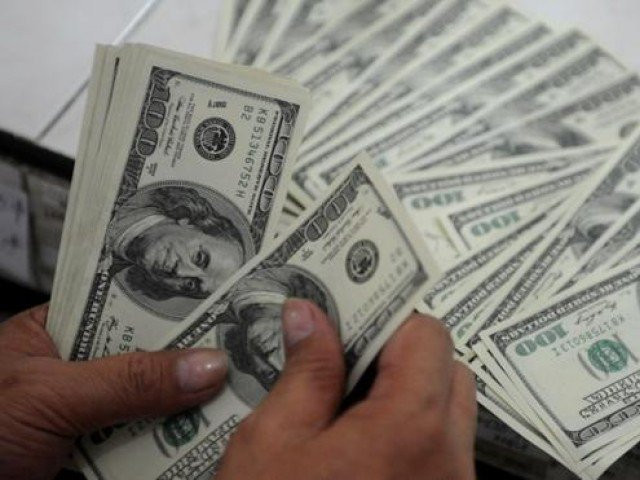Trade deficit shrinks over 28% to $13.8b in Jul-Jan FY20
Exports show negative growth for third successive month

PHOTO: FILE
Trade figures, released by the Pakistan Bureau of Statistics (PBS) on Friday, showed that exports again posted negative growth both on a year-on-year and month-on-month basis in January, pulling cumulative export growth in Jul-Jan down to just 2.1%.
It was the third successive month when exports went down. In October 2019, export receipts amounted to $2.024 billion, which fell to $2.011 billion in November, $1.993 billion in December and $1.97 billion in January, showed the PBS statistics.
Pakistan cannot get rid of the International Monetary Fund (IMF) permanently until it ensures non-debt creating inflows on a sustainable basis. Exports are the most important source of non-debt creating foreign exchange earnings.
For coronavirus delays: Trade deal ambiguity gives China ample room
Total exports stood at $13.5 billion in Jul-Jan of the current fiscal year, reported the PBS. In absolute terms, Pakistan managed to increase exports by only $282 million from July through January despite devaluing its currency by 33% in the previous year.
This should be a matter of concern for the prime minister. It seems the economic managers are not showing the full economic picture to the premier who, in recent months, has been boasting of external sector improvement despite no major contribution by exports to the improvement.
Imports dropped 16% to $27.2 billion during the period under review, according to the PBS. In absolute terms, imports contracted $5.2 billion, which provided some relief to the government that was struggling to enhance exports.
The IMF has projected Pakistan's trade deficit will narrow down to $24.3 billion in the current fiscal year - a slightly lower projection due to weakening exports.
The IMF had earlier predicted exports would grow to $26.8 billion but in its latest report the estimate had been revised down by nearly a billion dollars to $25.7 billion.
Overall, the trade deficit, which stood at $19.2 billion in first seven months of the previous fiscal year, shrank to $13.8 billion in the same period of current fiscal year.
In absolute terms, there was a reduction of $5.5 billion in the trade deficit and 95% improvement came from the import side.
Seven-month exports were equal to half of the annual target of $26.8 billion while imports were equal to 53% of the target of $51.7 billion.
Successive governments have been providing subsidised loans, gas and electricity to the exporters but they fail to produce the desired results, requiring a review of the existing policies.
Overall, the import compression policies have affected the Federal Board of Revenue's (FBR) tax collection, which has resulted in a shortfall of Rs395 billion in tax revenues in seven months despite taking huge advances and blocking taxpayers' refunds.
If the government decides to ease restrictions on imports to provide support to economic growth and enhance tax revenues, it can lead to an increase in the trade deficit due to the current trends of exports.
The currency devaluation, as part of import compression policies and also aimed at increasing exports, has stoked inflation and increased the cost of doing business. A lack of diversification of export destinations and products and high cost of doing business are among the key factors behind low exports.
The Ministry of Commerce has launched the Look Africa initiative. However, there are questions whether Pakistan can gain anything from the initiative due to a narrow export base and adverse implications of the China-Pakistan Free Trade Agreement phase-II in the long run for the country's industrial base.
Exports contracted on a year-on-year and month-on-month basis. On a yearly basis, exports dropped 3.2% to $1.97 billion in January 2020 over the same month of last year, a net decrease of $65 million.
Russian envoy stresses joint efforts to boost trade relations
In January 2020, imports in dollar terms fell to $4 billion compared to $4.5 billion in the same month of last year, which reflected contraction of over 9.6% or $430 million, reported the PBS.
The trade deficit in January contracted 15% to $2 billion over the same month of last year due to import compression.
On a month-on-month basis, exports, which stood at $2 billion, went down by $23 million or 1.2% compared to the previous month.
Imports remained flat on a month-on-month basis. The month-on-month trade deficit widened $23 million or 1.1% to $2 billion, according to the PBS.
Published in The Express Tribune, February 8th, 2020.
Like Business on Facebook, follow @TribuneBiz on Twitter to stay informed and join in the conversation.


1735506669-0/image-(16)1735506669-0-208x130.webp)
















COMMENTS
Comments are moderated and generally will be posted if they are on-topic and not abusive.
For more information, please see our Comments FAQ